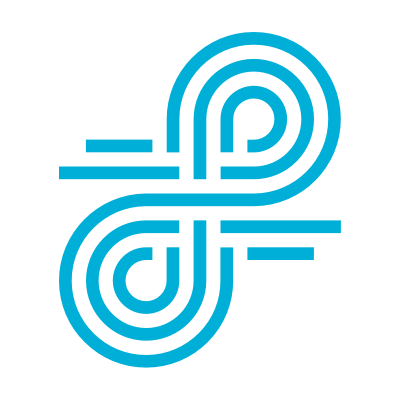Technology in Post-COVID K-12
The COVID-19 pandemic presented many challenges to students, educators, and parents. Some school districts had already integrated tech into their classrooms before COVID-19, so the shift to distance learning wasn’t their biggest hurdle.
Lightspeed Systems had the opportunity to meet with Stacy Royster, Chief Technology Officer for Opelika City Schools in Opelika, Alabama, to look back on how the pandemic impacted her school district and gain insight on the challenges they had to overcome and the successes they celebrated. We focused on student and teacher mental health, learning loss and recovery, new teacher trainings, and her outlook of “the new normal” as her school district opens its doors for in-person learning.
How did the emergency school closures impact your district in terms of EdTech?
Our district transitioned to a 2:1 system — two Chromebooks for each student. Students had one device for school, and one for home. This greatly reduced the risk of damage or loss of the device because they weren’t carried back and forth.
We elected to not take the devices at students homes this summer. We’re leaving them in the kids’ hands. Next year we’ll allow them to use all the online options we’ve vetted and approved. We have a repository of lessons for K-5 and a full online platform for 6-12.
So, for a child who fell behind during the pandemic or who has gaps, we can assign supplemental instruction from that repository or platform. When they’re home, the student can work through that instruction with their parents. Parents now know more about our standards and curriculum than they ever have before. We need to take that involvement and carry it forward, and technology lets us do that.
How are you using those lessons for summer school, and how will they be used when students return to in-person learning?
We’re using those lessons to address the learning gaps for students who are struggling, and not on grade– level. At our district, we’re now in summer school. We have about 600 students on campus who are trying to get caught up before fall. This year the purpose of summer school is to help students who didn’t do well in a virtual learning environment.
With summer school in session, we’re focusing on differentiated instruction for online learning and supplementing as needed. We’re using our tech tools to help students fill gaps in their learning and catch up in areas where they fell behind. With the shift to full in-person instruction in the fall, we’re also providing more specialized professional development for teachers.
We know that many students experienced learning loss, similar to what’s expected over the course of a summer. What’s unique about this year, is that most gaps were due to difficulties students had adapting to remote learning.
For some students, it's been over a year since they’ve interacted with their peers. Do you see any potential concerns or roadblocks with social-emotional learning and mental health as students return to full in-person learning?
One huge concern that full-time online learning brought forth is in the area of social-emotional learning. Isolation from peers and teachers has been distressing and disruptive for students, and the thought of returning to the classroom is bringing on new stress. There’s a real concern about the long-lasting effects on student and teachers’ mental health. We have plans in place should any concern arise.
I’ve been the head of technology for eight years, and this was the first year that we saw alerts in our system for young children, elementary-aged students, indicating a possibility of self-harm. One alert came through for a 2nd-grader typing in a document talking about ending their life. My heart sank, but we saw the alert immediately and were able to intervene.
The reports of child abuse cases have gone down this year, and one reason for the decline is that students were not in school for teachers to see that it was happening. Students weren’t able to confide in a counselor or trusting adult like they could before the pandemic. Now we have to watch for these signs in hidden ways, and students will release this information through technology. They’ll type into a Google search, an online document, or a private chat, unaware that we’re tracking all of this. Having the technology to receive an immediate alert has been life-changing in many ways.
We also turn on these alerts for our teacher accounts because they need support too. Teachers have had to deal with one of the hardest years of their career. They’re searching for solutions online and looking for support any way they can get it. We can now intervene with a phone call just checking in, give support, and help them find the resources they need. Teachers’ mental health is one of our top priorities along with students.
Has your district made changes to the way that you respond to, and prevent, incidents that result from impacted mental health?
Yes, we have. The introduction of human review with Lightspeed Alert™ has had a substantial impact on our work. It’s relieved me and our other tech personnel from having to monitor emails round the clock. If something requires our attention, we get a phone call, and determine where to go from there. Some schools in our district sit on major interstate highways, and we’ve had to deal with child abductions and worse. We got an alert in our system that helped us stop an abduction from taking place. The safety of our students is our top priority.
The new technology we integrated has allowed us to change the way we ensure student safety by giving us early warnings through online behaviors and filtering dangerous, and completely inappropriate, content our kids are exposed to daily when online. These technologies have changed the face of how we operate.
With the push for schools to open their doors and return to normal, what does Back to School look like for your district this fall?
Returning to 100% in-person learning doesn’t mean we’ll go back to what we experienced before the pandemic. When people describe going back to normal, it won’t be the normal that existed before COVID-19. It’ll be a new normal where we expand the use of this newfound technology.
Want to hear more from Stacy?
Watch the on-demand webinar, Returning to Normal: What “Back to School” Really Means

